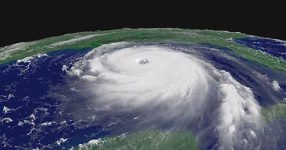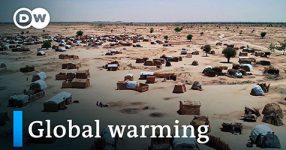“The Longest Day: Heat” is a documentary that sheds light on the harsh realities faced by people living on the front lines of climate change. The narrative unfolds through the lens of communities across Asia, emphasizing the tangible risks and threats posed by climate change. This is not just a story; it’s a glimpse into the daily battles fought by these communities against intense heatwaves, prolonged droughts, and the destructive impact on mega-cities.
A Day in the Life of Capri in Summer Island
The documentary introduces us to Apruanus, a resident of a remote fishing village on Summer Island, one of Indonesia’s poorest places. The village’s dependence on the environment for survival, coupled with the impact of widespread deforestation, paints a bleak picture. With only six percent of its forests remaining, Summer Island experiences extreme conditions, with no rainfall for eight months and temperatures consistently above 30 degrees. Capri’s daily routine, marked by early rises and an arduous journey to school, showcases the resilience of individuals facing a crisis.
Challenges Faced by Outdoor Workers in Singapore
The focus then shifts to Singapore, where we meet a supervisor at a landscaping nursery, one of the thousands of outdoor workers enduring increasing heat and humidity. The documentary highlights Singapore’s alarming rate of temperature rise, twice as fast as the global average, posing risks to outdoor workers’ health. The conditions in Singapore, with 84 percent humidity, make it a challenging environment for those exposed to the elements.
Impact on Delhi’s Slum Communities
The narrative takes us to Delhi in May 2020, where a mega-city of over 30 million people faces a severe heatwave. The consequences of rising temperatures are particularly harsh for the slum communities, with inadequate access to water and shelter. Individuals like Sema, a childcare worker, showcase the challenges faced by those resettled due to urban development. The poorly constructed houses amplify the heat, reaching temperatures up to five degrees higher than outside.
Architectural Solutions in the Face of Heat
Architect Ashok Lau intervenes to address these challenges, emphasizing the need for proper housing in the face of climate change. His innovative designs, such as reflective roofing and handmade devices for insulation, aim to mitigate the impact of extreme heat. Lau’s approach advocates simplicity and cost-effective measures that could make a significant difference, especially for the economically disadvantaged.
Daily Struggle for Survival in Southeast Asia
As the documentary unfolds, it brings attention to the daily struggles faced by individuals like Apruanus, who, after finishing school, embarks on a long journey home in the sweltering heat. The impact of heat extends to Southeast Asian cities like Singapore, where reliance on air conditioners contributes to greenhouse gas emissions. Dr. Jason Lee conducts experiments to explore alternative cooling strategies, considering their potential impact on cognitive functions, especially in a classroom setting.
The Global Impact and Urgent Need for Solutions
The documentary concludes by emphasizing the global implications of rising temperatures, predicting a temperature increase of more than 4.5 degrees by the end of the century. With a focus on slum communities, the narrative underlines the urgent need for innovative solutions. Initiatives like the Mahila Housing Trust’s efforts to transform roofs and Ashok Lau’s architectural interventions highlight the importance of adapting to extreme heat while acknowledging the need for broader systemic changes.
In essence, “The Longest Day: Heat” serves as a powerful exploration of the daily struggles and resilience of communities grappling with the impact of climate change, urging viewers to reflect on the urgent need for sustainable solutions.












